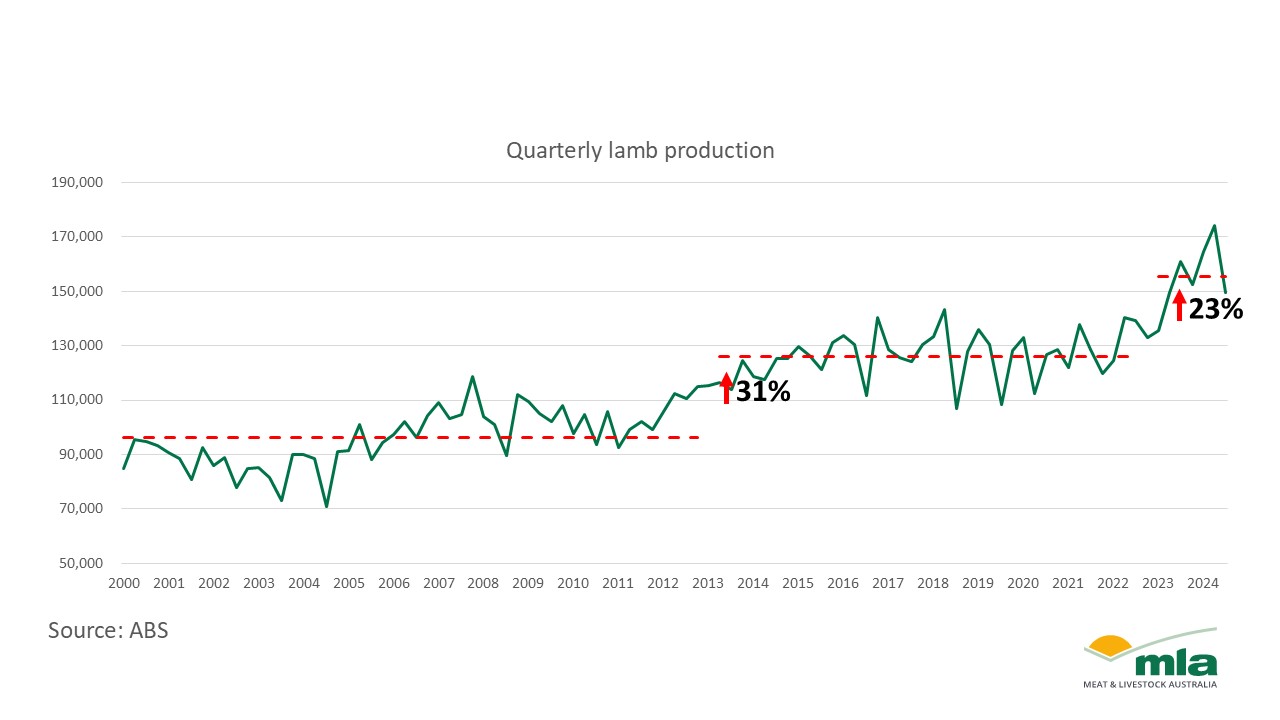Australia sees surge in sheepmeat production and exports

Australia's sheepmeat production has surged, with 2024 exports reaching record levels. A shift towards dual-purpose breeds, including shedding sheep, signals changes in industry dynamics.
The national sheep flock in Australia, historically built on Merinos and a robust wool sector, is experiencing a shift towards dual-purpose and meat breeds. This change has been influenced by various factors, including input prices, policy decisions, and changing generational desires.
Australia is now a significant player in the global sheepmeat production and export market, with export volumes for the 2024 calendar year reaching 359,299 tonnes, which is 10% higher than the previous record set in 2023. Mutton exports also rose to 255,098 tonnes, reflecting a 22% increase from the 2023 figures.
The past year has shown that the sector is strong in meat production, with elevated turn-off levels not solely driven by destocking. The industry has a history of responding effectively to create strong supply and demand dynamics in lamb production. Factors such as heightened processing capacity, cold storage, and increased carcase weights have all contributed to improving production capabilities.
The average quarterly lamb production over the last two years was 155,301 tonnes, representing a 23% increase compared to the previous decade. The expansion of sheepmeat breeds, alongside investments in genetics and better production practices, has further facilitated this growth.
One notable trend is the rise of 'shedding sheep', which have gained popularity in traditionally wool-based regions due to their lower infrastructure needs, reduced labour requirements, and fertility benefits. As the national flock sees an increase in shedding genetics, we can expect enhanced sheepmeat production capabilities.
The Meat & Livestock Australia (MLA) and Australian Wool Innovation (AWI) Sheep Producer Intentions Survey gathers insights from around 12% of sheep businesses, helping to inform on industry sentiment and future flock intentions. The results of the 2023 survey indicated that for the first time, Merino lambs were not the largest cohort, making up only 37% of the lamb drop compared to 38% for prime lambs. Initial figures for 2024 showed Merinos further declining to 35% while prime lambs remained stable.
Shedding breeds are seeing the most significant growth, doubling from 4% to 8% of the lamb cohort, with this trend particularly prevalent in pastoral zones. Improved marketing rates have been linked to advancements in production practices, showcasing a shift away from Merinos, which have lower marking rates.
While wool continues to hold significant importance in Australia, the increasing focus on sheepmeat production will have lasting effects on the broader food and fibre industry in the country.










)
)







